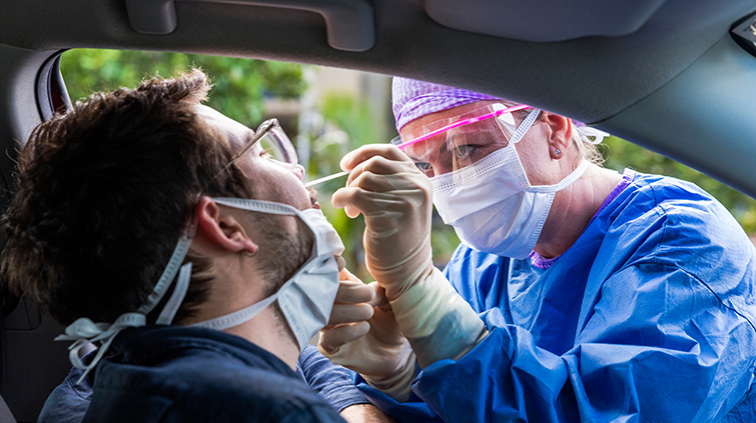
The COVID-19 pandemic taught many lessons and revealed various weaknesses in global supply chains and business models. The transportation industry was hit particularly hard as people stopped moving thereby taking down public transit, crashing rental car companies and airlines, and erasing the fleets of ride hailing operators.
Rental car companies and airlines were left with vehicles and airplanes with no customers, which was bad. Ride hail operators, on the other hand, lost both their customers and their drivers, which was worse.
The pandemic revealed the degree to which ride hailing operators were dependent upon profitless growth to scale their active user populations which could be leveraged for other purposes. The pandemic stripped away growth and revenue and forced a scaling back of leveraging activities such as forays into autonomous driving and trucking.
More fundamentally, though, the pandemic revealed the reality that the ride hailing business – the business of moving people in cars – was fundamentally not scalable. The metrics did not improve with the increase in the number of drivers – unless or until operators could achieve a monopolistic grip on automobile-based transportation, in which case prices could then rise after the elimination of competition – such as taxis and rental cars.
Now Uber and Lyft are frantically pivoting to food and grocery delivery, micromobility, and mobility-as-a-service (MaaS) integrations. This new positioning, which finds Uber collaborating with transit agencies and Lyft integrating robotaxis and rental cars, arrives as both companies struggle to retain drivers and passengers.
Both Uber and Lyft failed to instill confidence among customers and drivers during the pandemic. As a result, both companies saw substantial defections of both customers and drivers (including drivers succumbing to COVID) – though customers now appear to be returning more rapidly than drivers, creating an imbalance that is contributing to fare hikes likely to further undermine consumer confidence.
When the pandemic arrived, Uber and Lyft took insufficient steps to provide in-vehicle partitions to protect drivers and passengers. (Lyft made partitions available to drivers but did not require them.)
This failure was, for many drivers, the final straw in a long string of affronts from stolen tips and diminished compensation to unexplained de-activations. Pre-pandemic, Uber and Lyft – as well as competing ride hail operators around the world – had become the go-to choice for ad hoc transportation – a luxury service offered at a discount. The pandemic blasted that flimsy veneer in a flash.
The pandemic turned a discounted luxury into risky business and Uber and Lyft did little to mitigate customer and driver concern. In contrast, DiDi Xuching in China – with more active users than there are people in the U.S. – spent the millions of Yuan necessary ($15M, actually, a rounding error) to see that partitions were installed in its vehicles. This single decision preserved DiDi’s solid user base and kept its drivers committed to the platform.
DiDi recognized that the ride hailing business is not scalable in and of itself. The scaling or leveraging opportunity lies in the collective active user base and the resulting transaction activity and data insights.
Both Uber and Lyft, in fact most ride hailing operators, are seeking to become superapps. To do so, requires the creation of dedicated active user populations that can be lured into other types of transactions from public transit and micromobility to e-commerce, home loans, insurance, and other personal services.
Uber and Lyft failed to retain millions of active users and hundreds of thousands of active drivers and are now scrambling to win them back – even as the delta variant of the coronavirus threatens the building economic recovery. Worse, though, is the reality that the pandemic forced many long-term committed Uber and Lyft drivers to reconsider their employment options.
Rivals to Uber and Lyft, such as Alto in Texas and Wingz, are now gaining traction – adding drivers and passengers with superior quality of service propositions both for the passengers and for the drivers. The pandemic revealed the weakness of driver and passenger ties to Uber and Lyft, and these competitors are jumping in.
In fact, these competitors are arriving just as Uber and Lyft are feeling forced to raise their prices. If there was one thing both Uber and Lyft were good at it, pre-pandemic, it was lowering prices to eliminate competitive threats – including both competing ride hail operators and taxis. With ride hail fares on the rise, drivers and passengers are doing more shopping.
Uber and Lyft failed their COVID test. COVID revealed their poor treatment of drivers and passengers and the resulting vulnerability to competitive threats. Uber and Lyft were nimble enough to pivot away from autonomous vehicle tech and toward micromobility and transit, but not nimble enough to take care of their customers in a pandemic. Neither drivers nor passengers will soon forget and profits will continue to suffer – as reflected in the latest earnings.
Share this post via:







Quantum Computing Technologies and Challenges